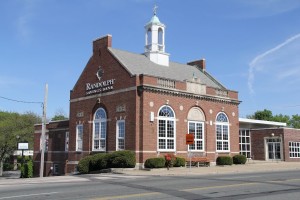Merger and acquisition costs as well as a “lower production of saleable residential mortgage loans” have contributed to lower quarterly earnings and year-to-date losses for Randolph Bancorp, the holding company of Randolph Savings Bank.
Randolp Bancorp reported third quarter income of $49,000, down $240,000 from the third quarter of 2016. Through the first nine months of the year, the company is in the red by $549,000, compared to last year when it had over $1 million in profits through the first nine months.
Year-over-year, total assets at the $505 million asset company are up over $50 million, while total deposits are down about $11 million.
“We successfully completed the conversion of First Eastern’s loan servicing system during the third quarter and with that have now completed all aspects of the merger integration,” James P. McDonough, president and CEO, said in a statement. “We also recently opened our newly constructed full-service branch office in Stoughton, Massachusetts while closing our former location serving this community. We believe the superior location and better technology available in this new branch office allows us to better serve our Stoughton customers and positions us to increase our share of deposits in this important market.”
After years of struggling to turn a profit, Randolph Savings Bank in July 2016 did a mutual-to-stock conversion. The bank then used the money it raised from the initial public offering to purchase First Federal Savings Bank of Boston and its First Eastern Mortgage unit.
Merger costs have dragged the company down this year.
According to a recent regulatory filing, the company has spent $531,000 this year on merger and integration costs, and spent $664,000 on those costs through the first nine months of 2016.
As a result of the acquisition, the company doubled the number of employees, increasing its salary and employee benefits from $9.9 million through the first nine months of 2016 to $14.1 million through the first nine months of this year.
In addition, according to the regulatory filing, marketing costs increased $317,000, or 103.3 percent, in the 2017 period compared to the prior year due to increased advertising, including internet advertising, and costs associated with re-branding of the bank.
Call reports show the company took losses of more than $2.1 million in 2014 and more than $750,000 in losses for 2015. But in 2016, the company reported a $463,000 profit.
Unfortunately, the company is on pace to drop back into the red for 2017, but more in line with 2015 losses and no additional merger integration costs associated with the First Eastern business combination are expected to be incurred.
Net loans year-over-year are up about $16 million, but less activity in the residential mortgage arena has hurt the bank’s business.
According to the regulatory filing, during the first nine months of 2017, the company sold $308.2 million of residential mortgage loans compared to $246.1 million of such loans in the first nine months of 2016.
That increase, however, was due to the acquisition of First Eastern.
Residential loan originations in 2017, which are down 35 percent, continue to be adversely affected by a lower volume of loan refinancing activity than in the prior year and a shortage of homes being marketed for sale.
Through Sept. 30, 74 percent of the bank’s loan originations funded home purchases and 26 percent funded the refinancing of loans. For all of 2016, loan refinancing activity accounted for 45 percent of total originations.
“We continue to make investments in our mortgage banking capabilities and to take actions to improve our market share to address the challenges of lower loan refinancing activity and a shortage of homes being marketed for sale in our lending area,” said McDonough.




 |
| 


